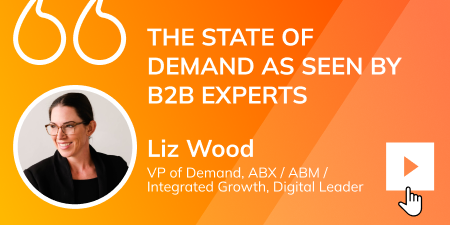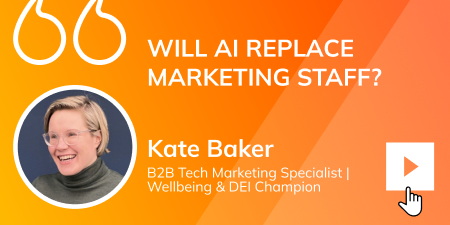Content marketing has never been more relevant in reaching and nurturing leads. In fact, according to a 2021 study by Edelman and LinkedIn, 54% of decision makers say they spend more than one hour per week reading and reviewing thought-leadership content. To create meaningful content, businesses need to understand the buying committees they are targeting. In 2023, INFUSE leadership found significant changes to the makeup and process of buying committees.
All attendees commented on a trend they are seeing over multiple regions: Organisations are not creating content that really speaks to the reader, and B2B tech content has a tendency to be self-serving.
Considering the current B2B landscape and the importance of personalisation to buyers, many businesses need to rethink their content strategies from scratch and consider what each piece of content is intended to accomplish and where it fits into the buyer’s journey.
INFUSE surveys have demonstrated that buyers have become more independent, engaging less with sales, and becoming more self-driven with research. This means that organisations need to create content that is available when buyers need it, on the channels they frequent, whilst fitting their specific stage of the buyer's journey. By closely monitoring the types of content being consumed by various buyer personas and demographics, businesses can also better infer audience segmentation per content type and buyer journey stage.
A good example of the latest trend of self-serving content within the B2B space comes from an experience from MOI Global’s team where they took part in a survey that analysed content consumption from the point of view of marketers and buyers. The analysis showed that answers from the marketers were in direct conflict with the buyers. Buyers had indicated a significant need for vendor comparison content, but the marketers did not see the value in such content, as it apparently did not offer the organisation any value.
Trying to tightly control or limit the conversation around an industry, brand, or solution will only lead to prospects seeking this information elsewhere, which means marketers are in danger of completely losing control of the narrative. When brands have the courage to provide content that is useful to the buyer and not always of interest to the business, it shows commitment to prospects that they are not prioritising solely their goals and intentions.
All experts agreed that trust from buyers is crucial and can be earned through the type of content that is published. If marketers publish content that genuinely assists buyers by making their lives easier, helping them progress in their organisation, and ultimately making them feel heard and understood in their needs, it will increase their trust in the brand.
Buying decisions impact the buying committee members personally, as they are under immense pressure to make the right call and it impacts their organisation’s perception of them. Therefore, the more content and helpful tools a brand provides, the more incentive a decision maker will have to consider them. HubSpot, Marketo, and Adobe are especially adept at doing this with their educational content and academies.
The leaders at MOI Global also pointed out the challenge of long-standing beliefs among marketers that B2B content needs to be complex to be considered professional or valuable to leads. This is especially true when C-suite leads often do not have time due to busy schedules to properly immerse themselves in such content.
To cater to this limited availability by decision makers, some B2B leaders are recommending a move from traditional B2B content to bite-sized content more similar to B2C, including TikTok videos in a User Generated Content (UGC) style. The consensus of the INFUSE and MOI experts was that B2B content does not require several months of development and that platforms like Instagram and podcasts are widely underutilised by marketers.
This trend toward shorter-form B2B content considers the user experience (UX) of consuming content in the way that buyers do in their personal lives and serves as another indicator of how B2B and B2C approaches are blending. Different formats consider other devices and a new generation of buyers which has an increased need for personalised and short-form content with clear takeaways.
A valuable recommendation by the experts included inviting CMOs as guest speakers for brand content to take advantage of a more genuine space to nurture relationships with buyers.
















